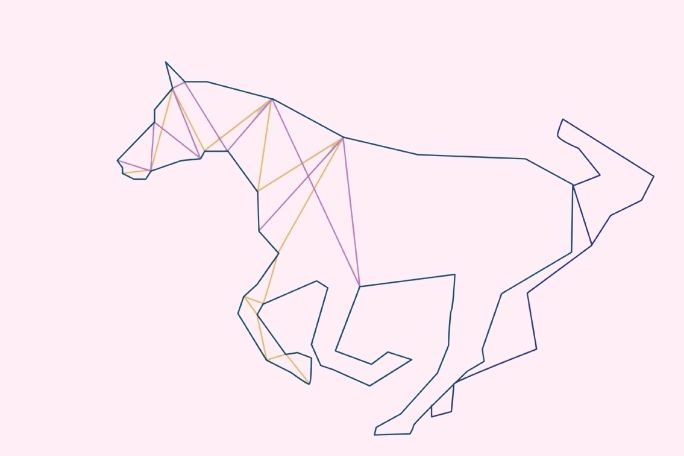Lesson summary
This is a STEAM lesson, which adds the Arts to STEM (Science, Technology, Engineering and Mathematics). To find out more about STEAM and STEM, click here.
In this lesson, students will connect knowledge and skills from Visual Arts, Science and Mathematics to develop geometric string art based on an animal of their choosing. Students will initially explore animal adaptations that allow them to survive in different world environments, then select a specific animal to research further. Students will then explore geometric drawing and create a string art piece using this technique.
Learning intentions:
Students will...
- understand that animal adaptations allow them to survive in harsh environments
- create geometric pictures using straight lines.
Success criteria:
Students can...
- explain adaptations of a selected animal that help them survive in their environment
- use a picture of an animal as the basis for a geometric picture
- use a ruler to draw straight lines
- use a needle and embroidery thread to create an image on canvas
- identify geometric shapes within their artwork
- identify and measure angles of a shape and around a point.
Lesson guides and printables
Lesson details
Curriculum mapping
We encourage you to teach STEAM both through and between disciplines (transdisciplinary).
This lesson could be used across multiple strands of the curriculum, including Science, Maths, and Visual Arts. Consider focusing on a curriculum strand that will complement other areas of learning you and your students are working on.
Syllabus outcomes: VAS3.1, VAS3.2, ST3-10LW, ST3-11LW, MA3-16MG, MA3‑1WM.
General capabilities: Literacy, Numeracy, Critical and Creative Thinking.
Cross-curriculum priority: Sustainability.
Unit of work: Learning Through Art & Craft – Primary.
Time required: 120 mins.
Level of teacher scaffolding: Medium – this lesson has elements that draw on a range of skills. Some students may require support to research, others may require support applying new artistic skills, and others again may require support to identify and measure angles.
Resources required
- Device capable of presenting video
- Digital devices for students to use for research and printing
- Example of completed task
- Equipment capable of projecting to the class
For each student:
- Black embroidery floss
- Canvas
- Copy of the Student Worksheet
- Embroidery needles
- Masking tape
- Mechanical pencils with HB leads or HB pencils
- Notepad/notepaper
- Plain white paper
- Protractors
- Ruler
- Tracing paper
Skills
This lesson is designed to build students’ competencies in the following skills:
- Communication
- Creativity
- Critical thinking
- Empathy
Additional info
STEAM Education:
Over recent years, the importance of STEM has been heavily promoted and discussed within fields of education. This has been within the context of ensuring that the next generation of students are provided with relevant knowledge and skills for the 21st century. STEM acknowledges the importance of the interrelated nature of science, technology, engineering and mathematics and the prominence of these skills in a world of continuous technological advancement.
What was missing from this original acronym, however, was an acknowledgement of the vital importance of artistic and creative thinking. The ability to think outside the box to develop artistic and creative solutions.
The relevance of art is integral to success in all of the original STEM areas, and so STEAM education is now moving to the forefront. Significant figures in science and technological advancement (notably Leonardo DaVinci, Albert Einstein and Steve Jobs) valued and applied the contribution of artistic skill into their work and art, design and creativity is also pivotal to success in industries such as marketing, advertising and promotion.
This is an original Cool+ lesson.


Welcome back!
Don't have an account yet?
Log in with:
Create your free Cool.org account.
Many of our resources are free, with an option to upgrade to Cool+ for premium content.
Already have an account?
Sign up with:
By signing up you accept Cool.org's Terms and Conditions(Opens in new tab) and Privacy Policy(Opens in new tab).